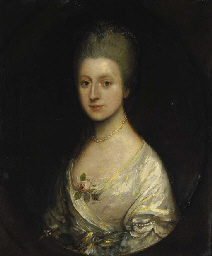William Dunkin (judge) facts for kids
Quick facts for kids
William Dunkin
|
|
|---|---|
| Born | 1807 |
| Nationality | Irish |
| Occupation |
|
Sir William Dunkin (died 1807) was an Irish lawyer and judge. He worked in Bengal, which was part of British India at the time.
Contents
Life Story of William Dunkin
William Dunkin was born in County Antrim, Ireland. In 1753, he joined the Middle Temple. This is a place in London where people train to become barristers. A barrister is a type of lawyer who speaks in court.
Early Career and Move to India
Dunkin became the High Sheriff of Antrim in 1777. This was an important local role. Even though he owned land, he faced financial challenges. So, he decided to move to Calcutta (now Kolkata) in India. He wanted to work there as a barrister.
In 1781, his friend Edmund Burke mentioned Dunkin was on his way to India. In Calcutta, Dunkin became friends with William Hickey. He lived a simple life, sharing a home with another Irish lawyer, Stephen Cassan.
Becoming a Judge in India
In 1788, Dunkin sailed to England. He hoped to get a job as a judge in Calcutta. He returned to Bengal in 1791. He had been appointed a judge for the Supreme Court of Judicature at Fort William. He was also knighted that year, meaning he received the title "Sir."
His appointment was likely helped by Henry Dundas. However, not everyone on the court was happy. The senior judge, Robert Chambers, was unsure about Dunkin. Dunkin and Hickey often disagreed with Chambers. There were some arguments in court cases. One famous case involved John Hyde being brought to court while sick.
Later Life and Retirement
Dunkin left his judge position in 1797. John Royds took his place. After retiring, he lived in London. He had a house in Portman Square. He passed away in 1807 in The Polygon, Southampton.
His Writings
When Sir William Jones, a famous scholar, died in 1794, Dunkin wrote a special Latin poem for his tomb. This type of poem is called an epitaph. It was placed on Jones's tomb in Calcutta. Later, another writer, Eyles Irwin, translated it into English.
Dunkin's Family Life
In 1764, William Dunkin married Elizabeth Blacker. She was born in 1739 and lived until 1822.
His Children and Their Marriages
Their oldest daughter, Letitia, married Sir Francis Workman Macnaghten. They had a very large family of 16 children! One of their sons was William Hay Macnaghten.
William Dunkin had some disagreements with William Burroughs. Burroughs was a top lawyer in Bengal. Because of this, Francis Macnaghten tried to challenge Burroughs to a duel. He also tried to get him removed from his job. Through this marriage, the Macnaghten family gained ownership of the Dunkin family home in Bushmills.
Dunkin had other daughters too. His daughter Jane married Richard William Wake. His daughter Rachel married John Bladen Taylor. John Taylor was a Member of Parliament. His youngest daughter, Matilda, married Valentine Conolly.
William Hickey, Dunkin's friend, mentioned that Dunkin had two sons. One son, Edward, came to Bengal with his father in 1791. He was a teenager but had health issues. Hickey said Edward went back to Europe and died when he was young. Hickey also mentioned Captain John Dunkin, who was a soldier.


